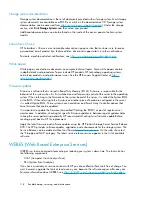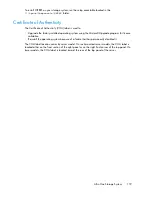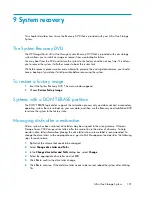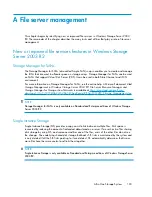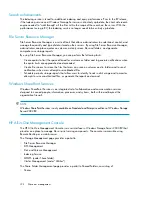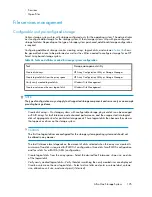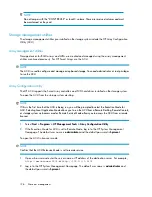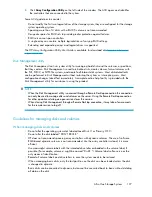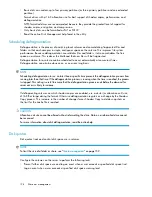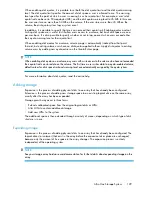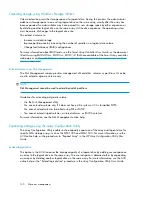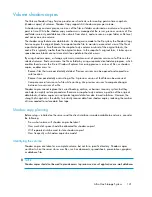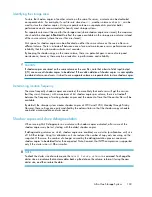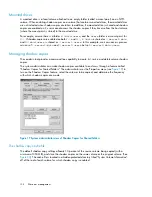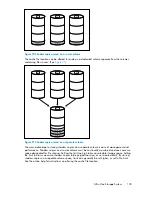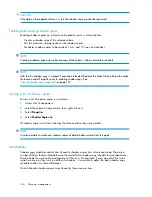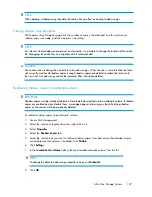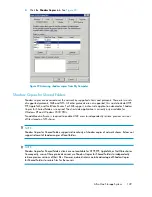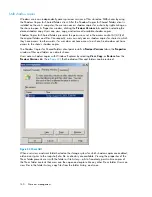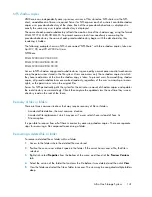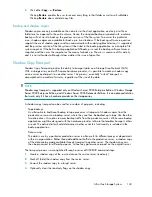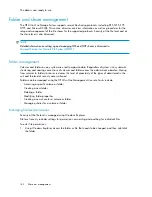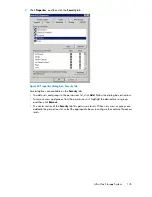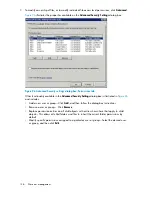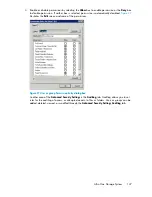
Shadow copies are designed for volumes that store user data such as home directories and My
Documents folders that are redirected by using Group Policy or other shared folders in which users
store data.
Shadow copies work with compressed or encrypted files and retain whatever permissions were set
on the files when the shadow copies were taken. For example, if a user is denied permission to read
a file, that user would not be able to restore a previous version of the file, or be able to read the file
after it has been restored.
Although shadow copies are taken for an entire volume, users must use shared folders to access
shadow copies. Administrators on the local server must also specify the
\\servername\sharename
path to access shadow copies. If administrators or end users want to access a previous version of a
file that does not reside in a shared folder, the administrator must first share the folder.
NOTE:
Shadow copies are available only on NTFS, not FAT or FAT32 volumes.
Files or folders that are recorded by using Shadow Copy appear static, even though the original data
is changing.
Allocating disk space
When determining the amount of space to allocate for storing shadow copies, consider both the
number and size of files that are being copied, as well as the frequency of changes between copies.
For example, 100 files that only change monthly require less storage space than 10 files that change
daily. If the frequency of changes to each file is greater than the amount of space allocated to storing
shadow copies, no shadow copy is created.
Administrators should also consider user expectations of how many versions they will want to have
available. End users might expect only a single shadow copy to be available, or they might expect
three days or three weeks worth of shadow copies. The more shadow copies users expect, the more
storage space administrators must allocate for storing them.
Setting the limit too low also affects backup programs that use shadow copy technology because
these programs are also limited to using the amount of disk space specified by administrators.
NOTE:
Regardless of the volume space that is allocated for shadow copies, there is a maximum of 64 shadow
copies for any volume. When the 65th shadow copy is taken, the oldest shadow copy is purged.
The minimum amount of storage space that can be specified is 350 megabytes (MB). The default
storage size is 10 percent of the source volume (the volume being copied). If the shadow copies are
stored on a separate volume, change the default to reflect the space available on the
storage
volume
instead of the
source
volume. Remember that when the storage limit is reached, older versions of the
shadow copies are deleted and cannot be restored.
CAUTION:
To change the storage volume, shadow copies must be deleted. The existing file change history that is kept
on the original storage volume is lost. To avoid this problem, verify that the storage volume that is initially
selected is large enough.
File server management
132
Summary of Contents for STORAGEWORKS ALL-IN-ONE STORAGE SYSTEM
Page 14: ...14 ...
Page 34: ...Installing and configuring the server 34 ...
Page 60: ...Storage management overview 60 ...
Page 88: ...Data protection 88 ...
Page 120: ...Troubleshooting servicing and maintenance 120 ...
Page 122: ...System recovery 122 ...
Page 172: ...Microsoft Services for Network File System MSNFS 172 ...
Page 204: ...Index 204 ...

